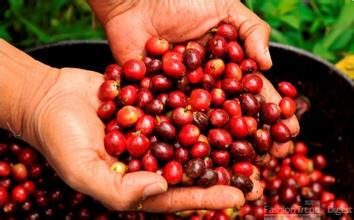Characteristics of mocha coffee beans in Yemen-coffee beans suitable for mocha pots
Characteristics of mocha coffee beans in Yemen-coffee beans suitable for mocha pots
Gene mutant
Pointed Bourbon (Bourbon Pointu): found in Bourbon Island in 1810, beans changed from round to pointed, with only half the caffeine content, but in small amounts, weak and extremely precious (mostly cultivated in the laboratory).
Elephant bean (Maragogype, or Elephant Bean): Tibica's best-known variety of beans, first discovered in 1870 in the Maragogype bean-producing region of the state of Bahia in northeastern Brazil, is at least three times larger than the average Arabica, hence the name. The taste of elephant bean is poor in low altitude area, but it has better flavor at high altitude, mild sour taste and sweet fragrance.
Geisha (Geisha): a derivative of the Tibika family, it was exported from the Geisha Mountains of southern Ethiopia in 1931 (Geisha is synonymous with Japanese geisha). After being unknown in many countries, it was transplanted to Panama in the 1960s and did not begin to win cup tests until 2005.
Kenyan "SL28" and "SL34": the bourbon line, screened and cultivated by French and British missionaries and researchers in Kenya in the early 20th century, has adapted to Kenya's high-concentration phosphate soil for a century, giving birth to Kenyan characteristics of sour elves; top Kenyan coffee comes from these two varieties, but it loses its flavor when transplanted elsewhere.
Yellow bourbon (Bourbon Amarello, or Yellow Bourbon): a bourbon variety endemic to the Brazilian state of Sao Paulo, where the coffee fruit does not turn red and is orange when ripe. It was later found that the pericarp of other local bourbon-derived varieties also turned yellow.
Kaddura (Caturra): a single genetic variant of bourbon, discovered in Brazil in the 1950s. The long-term ability and disease resistance are better than bourbon, and no shade tree is needed; the flavor is equal to or slightly worse than bourbon.
Pacas (Pacas): the bourbon variety found in El Salvador, which was transplanted into El Salvador coffee farmer Pacas in 1935, yielded more results than other coffee trees of the same species in 1956. Experts were asked to identify and confirm that there was a genetic mutation.
The bourbon variety, which was first discovered in Costa Rica in the Villa Sarchi:1960 era, has often appeared on the cup test list of excellence in recent years.

Important Notice :
前街咖啡 FrontStreet Coffee has moved to new addredd:
FrontStreet Coffee Address: 315,Donghua East Road,GuangZhou
Tel:020 38364473
- Prev

Flavor description of Costa Rican Red Bourbon Red Honey treated Coffee Bean
Flavor description of Costa Rican red bourbon red honey treated coffee varieties Costa Rica can be divided into two seasons a year, the dry season is from December to April, when the coffee is harvested, and the rainy season is from May to November. In recent years, micro-treatment plants have been set up one after another, because the water consumption is only 5% of that of traditional washing plants, and there is no need for huge sinks and exposure fields.
- Next

Panamanian Coffee Market Analysis Flavor description Taste characteristics introduction to Grinding Calibration method
Panamanian coffee market analysis flavor description taste characteristics grinding scale treatment method Panama has been among the best coffee producers in the world since three years ago, which has surprised countries that have been in the vanguard of developer production for many years. Panamanian coffee is mainly produced in the west near the Costa Rican border, producing the best washed coffee. Compared with the middle and low elevations
Related
- Detailed explanation of Jadeite planting Land in Panamanian Jadeite Manor introduction to the grading system of Jadeite competitive bidding, Red bid, Green bid and Rose Summer
- Story of Coffee planting in Brenka region of Costa Rica Stonehenge Manor anaerobic heavy honey treatment of flavor mouth
- What's on the barrel of Blue Mountain Coffee beans?
- Can American coffee also pull flowers? How to use hot American style to pull out a good-looking pattern?
- Can you make a cold extract with coffee beans? What is the right proportion for cold-extracted coffee formula?
- Indonesian PWN Gold Mandrine Coffee Origin Features Flavor How to Chong? Mandolin coffee is American.
- A brief introduction to the flavor characteristics of Brazilian yellow bourbon coffee beans
- What is the effect of different water quality on the flavor of cold-extracted coffee? What kind of water is best for brewing coffee?
- Why do you think of Rose Summer whenever you mention Panamanian coffee?
- Introduction to the characteristics of authentic blue mountain coffee bean producing areas? What is the CIB Coffee Authority in Jamaica?

